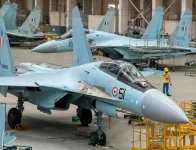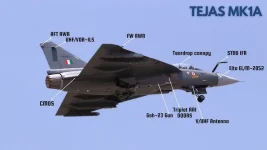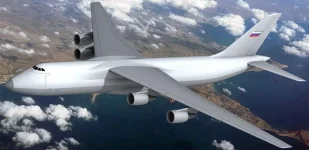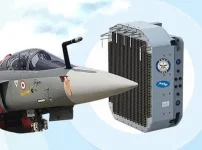- Views: 6K
- Replies: 37
India is intensifying its efforts towards achieving self-sufficiency in crucial aerospace technology, particularly jet engines. The Indian Air Force (IAF) is showing renewed support for the indigenous Kaveri engine project, viewing it as a potential future powerplant for its expanding fleet of Tejas Mk1A light combat aircraft.
Overseen by the Gas Turbine Research Establishment (GTRE), this initiative aims to eventually substitute the American-made General Electric (GE) F404 engines that currently power the Tejas jets.
The strategic importance of an indigenous engine is clear, according to senior IAF officials. With commitments for nearly 220 Tejas Mk1A aircraft, expected to serve for approximately 40 years, the fleet will require a substantial number of engines – potentially over 700, assuming replacements roughly every decade.
Developing a domestic engine is thus seen as vital for both operational independence and economic prudence. However, GTRE faces a challenging development path, planning first to demonstrate a derivative engine before progressing to a more powerful version tentatively named Kaveri 2.0. This effort aligns with India's broader goal of significantly expanding its fighter fleet, aiming for around 60 squadrons by 2047.
The Tejas Mk1A represents an upgraded version of India's first domestically developed fighter jet. It currently utilises the GE F404-IN20 engine, which provides 54 kilonewtons (kN) of thrust without afterburner (dry thrust) and 84 kN with afterburner engaged (wet thrust).
The IAF initially ordered 83 Mk1As in 2021 and received approval for an additional 97 in late 2023 or early 2024, solidifying its plan for 220 jets. These aircraft are crucial for maintaining squadron strength as older MiG-21s are retired.
Each jet is expected to need at least three engines during its service life. The reliance on the imported F404 comes at a significant cost; a 2021 deal for 99 engines was valued at $716 million (approx. Rs 5,900 crore), placing the per-engine cost around $7.2 million, contributing to a multi-billion dollar expenditure over the fleet's lifetime, excluding maintenance and the risks associated with dependence on foreign suppliers, highlighted by past sanctions.
Deliveries of these F404 engines reportedly began recently, aiming to equip the first Mk1A squadrons by late 2025.
Development of the Kaveri engine began in 1986 specifically for the Tejas program, but encountered significant hurdles over decades, leading to delays and performance shortfalls. By 2017, the engine achieved 49 kN dry and 73 kN wet thrust – an improvement, but still below the F404's output and lacking the required combat reliability.
Consequently, GTRE set aside the original Kaveri for the Mk1A program in favour of the proven GE engine. Despite this setback, the aspiration for a successful Indian fighter engine persisted, driven by the growing scale of the Tejas Mk1A fleet and the long-term financial implications of importing F404s.
GTRE's current focus is on validating a Kaveri Engine Derivative (KDE) equipped with an afterburner module. The goal for this derivative is a wet thrust of 73-74 kN, comparable to the 75 kN thrust of the French M88-2 engine used in the Rafale fighter.
This KDE leverages design improvements stemming from a consultancy with French engine maker Safran (2014-2018), which addressed earlier issues like compressor problems and afterburner stability. Nine prototypes incorporating these improvements have undergone extensive testing.
A demonstration of the KDE is targeted for late 2025. Recent unrelated progress includes Indian firm Godrej Aerospace delivering initial modules for a different, smaller Kaveri derivative (a 48 kN dry engine likely for unmanned systems) to GTRE, showcasing ongoing industry collaboration in engine development.
However, achieving 73-74 kN thrust with the KDE, while a notable milestone, still falls short of the 84 kN provided by the F404 currently used in the Tejas Mk1A. An IAF official acknowledged this performance gap, indicating the KDE, even if successful, would not be a direct replacement in its current form for the demanding requirements of the Mk1A, which includes carrying a significant combat load. GTRE views the KDE primarily as a crucial step to prove the maturity of the core engine technology and manufacturing processes.
The ultimate objective for GTRE is the development of "Kaveri 2.0," envisioned as a significantly more powerful engine. This proposed engine aims for a wet thrust of around 90 kN, which would surpass the F404 and be closer to the GE F414 engine (98 kN) selected for the forthcoming, more advanced Tejas Mk2 aircraft.
Kaveri 2.0 is expected to incorporate advanced technologies, potentially including improved performance at high temperatures (flat-rated thrust) and advanced blade materials, possibly benefiting from technologies developed for India's fifth-generation Advanced Medium Combat Aircraft (AMCA) engine program and insights from the earlier Safran collaboration.
Intriguingly, the projected timeline for developing Kaveri 2.0 aligns well with the Tejas Mk1A's operational schedule. If the KDE validation is successful, developing and certifying Kaveri 2.0 could take an estimated six to seven years, potentially making it ready around 2031-2032.
With the first Mk1As entering service from 2025, their mid-life engine replacements would likely begin around 2034. This creates a potential "window of opportunity," as noted by the IAF official, to integrate a mature, indigenous Kaveri 2.0 engine into the fleet during scheduled overhauls. Realising this ambitious project would likely require significant investment, estimated at around Rs 10,000 crore (approximately $1.2 billion).
Significant challenges remain. The KDE demonstration in 2025 must convincingly prove its reliability, overcoming issues like afterburner stability that affected earlier prototypes. Scaling the design up to the 90 kN thrust target for Kaveri 2.0 without substantially increasing the engine's weight (the Kaveri prototype was already heavier than the F404) is a major engineering hurdle.
Securing consistent and adequate funding, which historically has been limited for the Kaveri project, will be critical. Furthermore, integrating a new engine type will require coordination with Hindustan Aeronautics Limited (HAL), which is already managing multiple aircraft production and upgrade programs.




